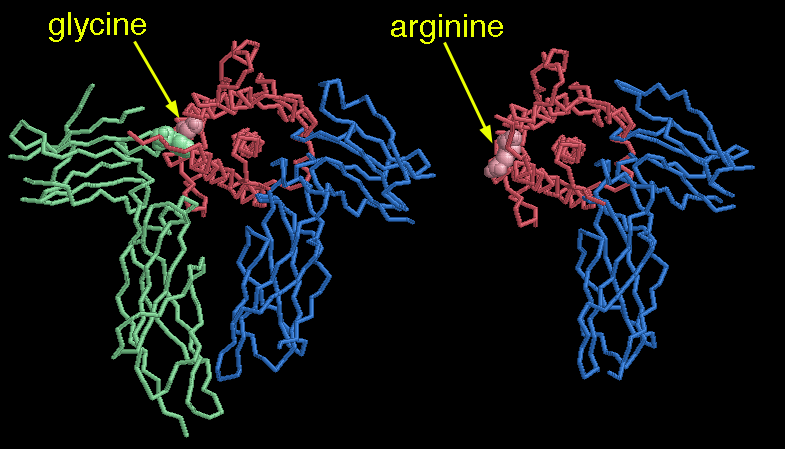|
Inhaltsübersicht | Nanomaschinen | Moleküle | Programme | Kurse | Fun | Links |
||
| > |
Growth Hormone

Exploring the Structure
Two growth hormone receptors bind to the hormone one after the other. Binding to the first site forms an inactive intermediate complex. The assembly becomes functionally active only when the second receptor molecule binds at the second binding site on the other side of the hormone. Any factor that disrupts this assembly can block the hormone's function. For example, changing a single glycine at position 120 to arginine will block receptor binding at the second site. By comparing the altered hormone (shown on the right from PDB entry 1hwh) with the normal hormone (shown on the left from PDB entry 1hwg), you can see that the large side chain of arginine 120 cannot be accommodated when the second receptor binds. This residue clashes with tryptophan 104 of the receptor (shown as green spheres). Thus the altered hormone cannot form a functional complex with a second receptor and no longer promotes growth - in fact it suppresses growth.
These pictures were created with RasMol. You can create similar pictures by clicking on the accession codes above and choosing one of the options under View Structure. A list of all PDB entries related to Growth Hormone as of March, 2004 is available here. For more information on growth hormone, click here.
These pictures were created with RasMol. You can create similar pictures by clicking on the accession codes above and choosing one of the options under View Structure. A list of all PDB entries related to Growth Hormone as of March, 2004 is available here. For more information on growth hormone, click here.
Next: Interaktive 3D-Animation
Previous: Growth Hormone in Action
Last changed by: A.Honegger,